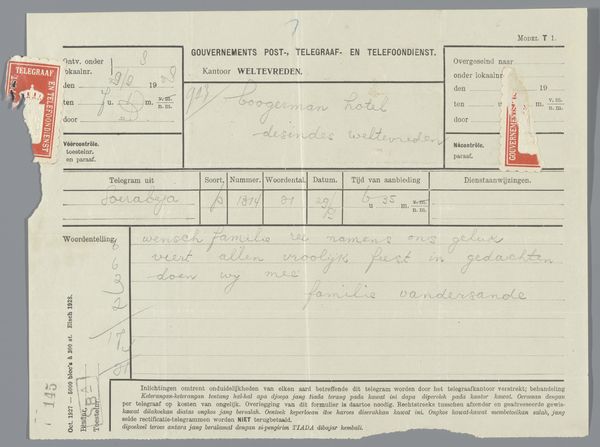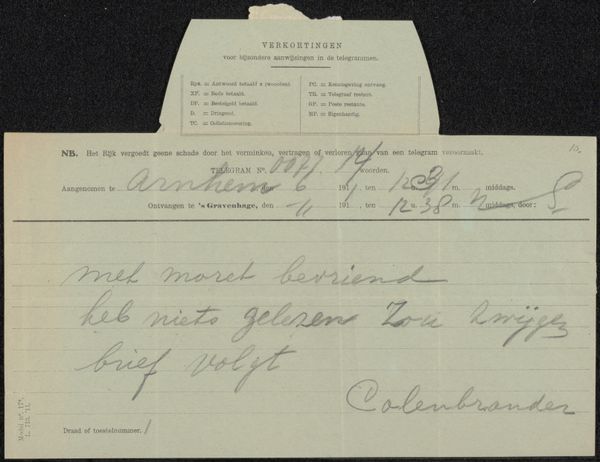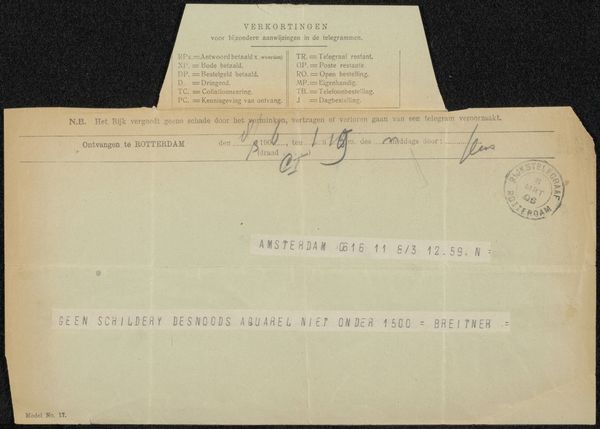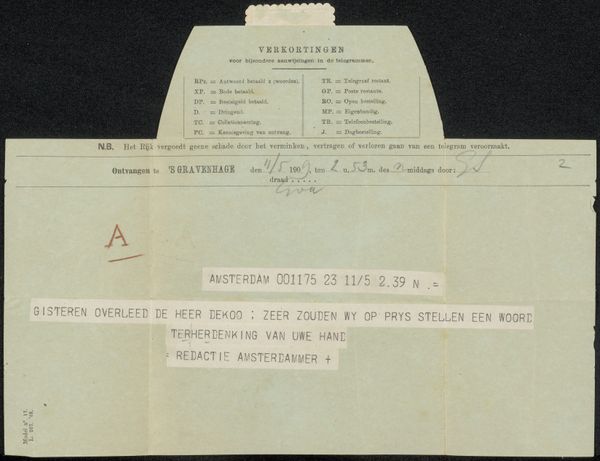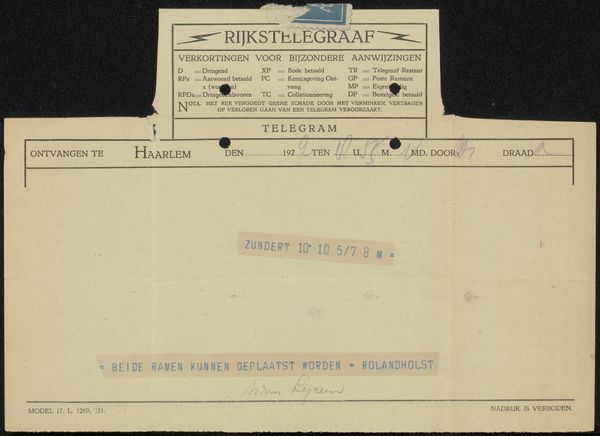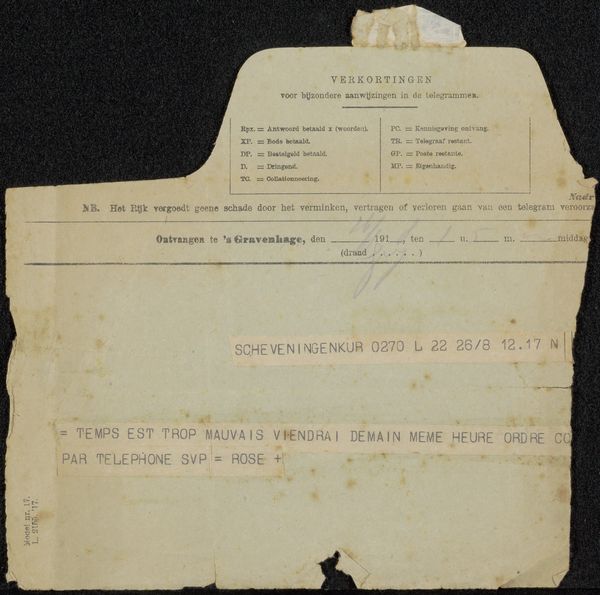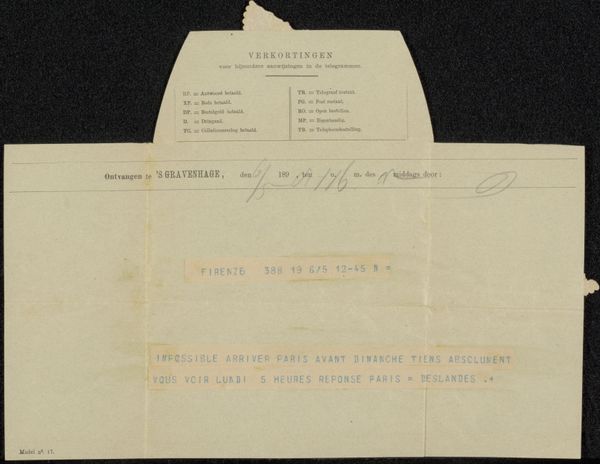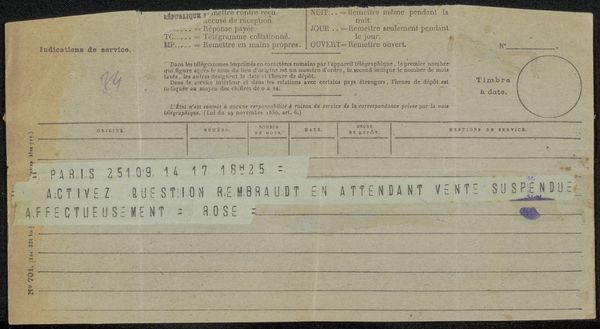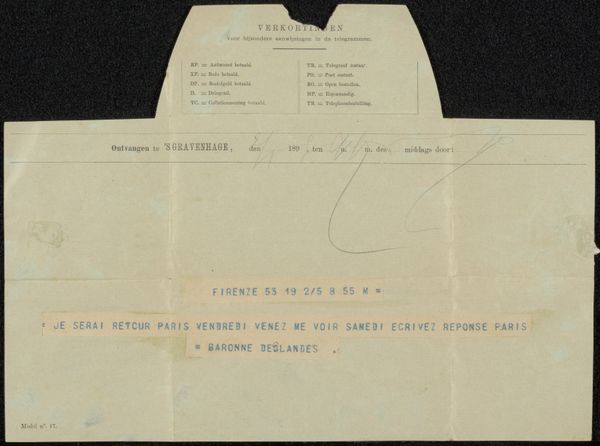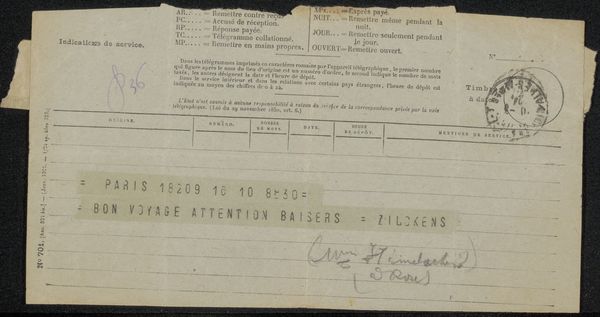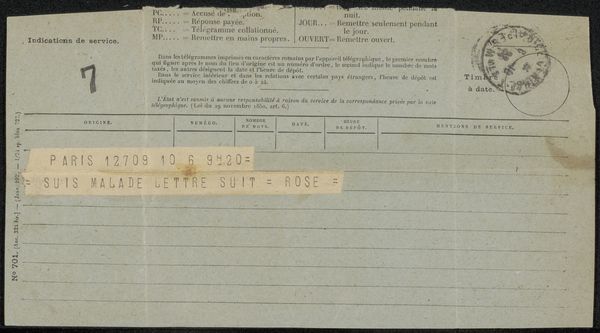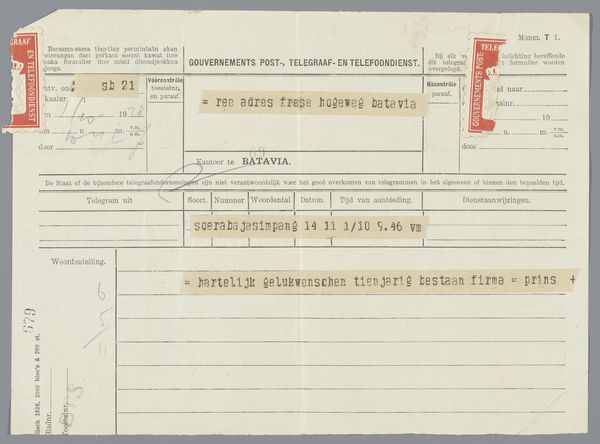
drawing, paper
#
drawing
#
aged paper
#
toned paper
#
vintage
#
old engraving style
#
paper
#
personal sketchbook
#
historical fashion
#
hand-written
#
script
#
stylized text
#
columned text
#
calligraphy
Copyright: Rijks Museum: Open Domain
Editor: So, this is Richard Nicolaüs Roland Holst's "Telegram aan Willem Bogtman," likely from 1923. It’s a drawing, seemingly just ink on a pre-printed telegram form. It looks pretty simple, almost like ephemera, but the handwriting gives it a personal touch. What can you tell me about this work? Curator: Look closely at the telegram itself. It’s a mass-produced form, meant for quick communication, a tool of burgeoning capitalism. Holst, however, reclaims it. He’s not just sending information; he's imbuing the mundane with artistry, challenging the traditional hierarchy that elevates painting over "lowly" writing or document design. Editor: So, you're saying the medium itself is important? Curator: Absolutely. The pre-printed form represents standardized communication, almost dehumanized. Yet, Holst's handwritten message and signature disrupt this. What's fascinating is the tension created between mass production and individual expression. How do you think the specific act of writing, the labor of his hand, plays into this dynamic? Editor: It's a direct intervention! His hand subverts the industrial printing, adding an element of craft. And this act of transforming something so commonplace adds another layer to its meaning. Curator: Precisely! Consider also the implied network that made this telegram possible. The workers who printed the form, the operators who transmitted the message… all of this contributes to our understanding of Holst's seemingly simple act of communication. It’s a social document, hinting at a web of relationships and labor. Editor: That’s a really interesting point. I initially just saw a note, but thinking about the labor and systems involved, it gives me so much more to consider. Thanks for highlighting that. Curator: My pleasure. It’s important to remember that even the most humble materials can tell profound stories about production, society, and artistic intention.
Comments
No comments
Be the first to comment and join the conversation on the ultimate creative platform.


